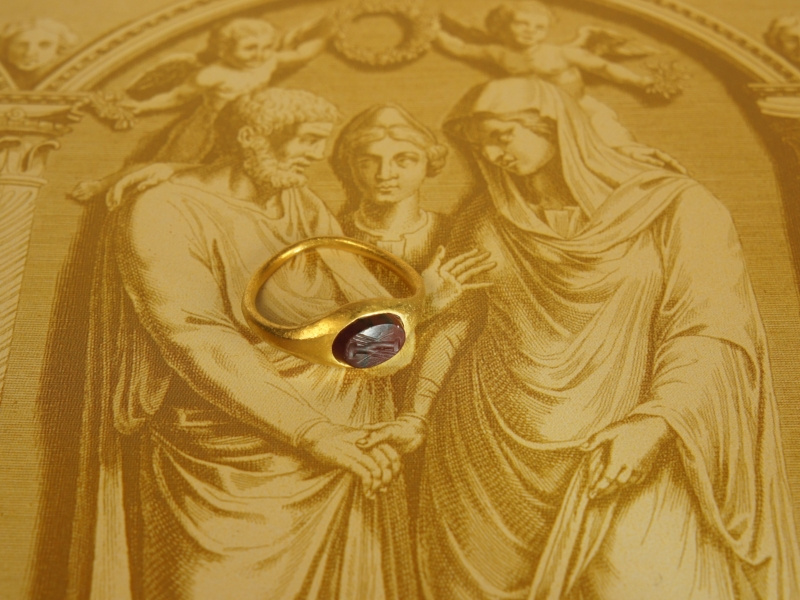
gold min. ___/000, equals __ carat
The allegory of two clasped right hands can already be found in ancient Greek and Roman culture. The handshake stands for Concordia. She is the personification of harmony and promotes and maintains the unity, brotherhood and solidarity of the citizens of Rome. The symbol of the intertwined right hands, the mani in fede, was used for all lawful unions and contracts. Since marriage was considered a legal contract by the Romans, unlike other contemporary peoples, the united right hands became a symbol of fidelity, love and friendship.
The presented Fede ring was probably given to the bride the day before the wedding. Since then she has worn it on the ring finger of her left hand. The solemn symbolic gesture showed the mutual understanding of the two families of the spouses and sealed the promise of marriage. On the wedding day itself, the two right hands of the bride and groom were tied with a scarf in a festive act.
The ancient Roman intaglio shows the clasped right hands cut in reddish-brown carnelian - in a highly stylized form as was customary in the 2nd century AD. See an example in the Alice and Louis Koch Collection in the Swiss National Museum, Zurich.
The ring hoop is probably newly made in gold based on the ancient Roman model, probably intentionally with a slightly porous surface and slightly bent. It is delicate and daintily, and very wearable.
The presented ring shows the Fede symbol in its original ancient Roman design language, so to speak, before the motif was taken up and modified again and again over the centuries, and is a beautiful, unmistakable piece of contemporary history!

